Here’s an analysis of the risks and benefit of investing with a HELOC, based on my personal experience as a surgeon and real estate investor.

This post may contain affiliate links.
Over the last 4 years, I’ve built a real estate portfolio of 28 units. A lot of it grew out of the strategic use of debt from a home equity line of credit (HELOC) on our primary home. Below, I’ll tell you how we came this decision. Then I’ll analyze the risks and benefits of investing with a HELOC.
Skip the backstory and jump to the analysis
The decision that changed everything
The biggest decision that affected my family’s real estate investing actually took place almost ten years before we bought our first rental property. Specifically, it was the choice to buy a primary residence in the first year of my residency in urologic surgery. It was pretty unusual to have the chance to become homeowners in Los Angeles in our late 20s, especially saddled with $200,000 of student debt from medical school.
But like a lot of good things in life, we didn’t do it on our own.
Although I came from a background of financial scarcity, my wife’s family was both financially blessed and also generous. In 2010, they helped us buy our “starter home” in Los Angeles for $840,000. They put up the down payment and we agreed to take care of the mortgage payments and responsibility of ownership.
Read more: How we amassed an investment portfolio of over $1 million
This home was a two bedroom, 1200 square foot home with a great layout and was situated just blocks from the county museum where my wife worked. Although it was on a busy street, we cherished our home. It was there that my wife and I started our family, hosted dinner parties, and otherwise started our adult lives.
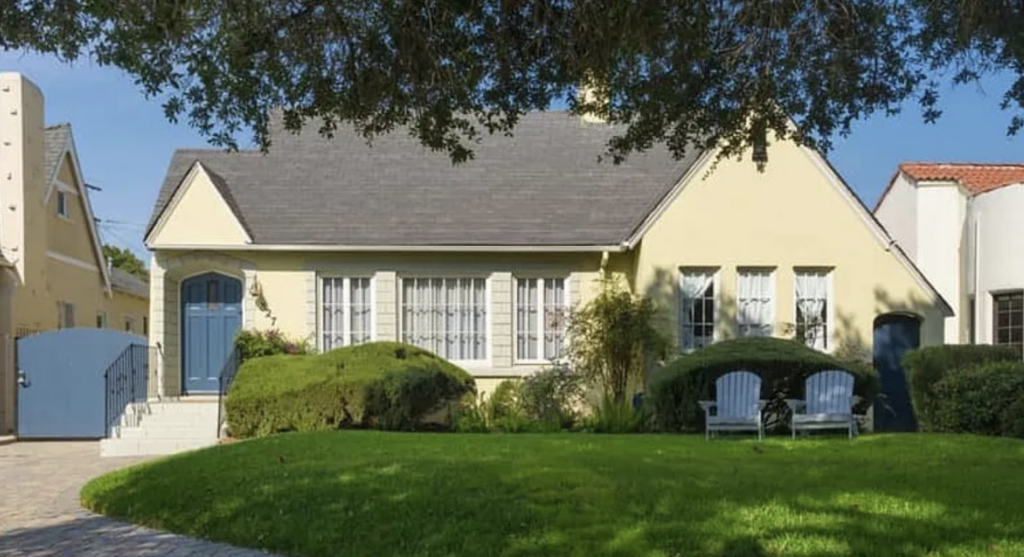

A decade of appreciation
Over the next decade, I persevered through six years of a grueling residency training program while learning the skills of urologic surgery. During this time, we were very lucky to catch the huge upswing of appreciation that rescued the US from the hangover of the real estate meltdown of 2008. We accumulated a massive amount of equity in our home that we rolled into a larger home after eight years in our first home.
The second home was twice as expensive and twice as large — a stereotypical “doctor home.” It had five bedrooms, and pool, and more than enough space for our expanding family. We quickly made it our dream home by building a unit in the backyard for my parents and making the landscape lush with trees and greenery.
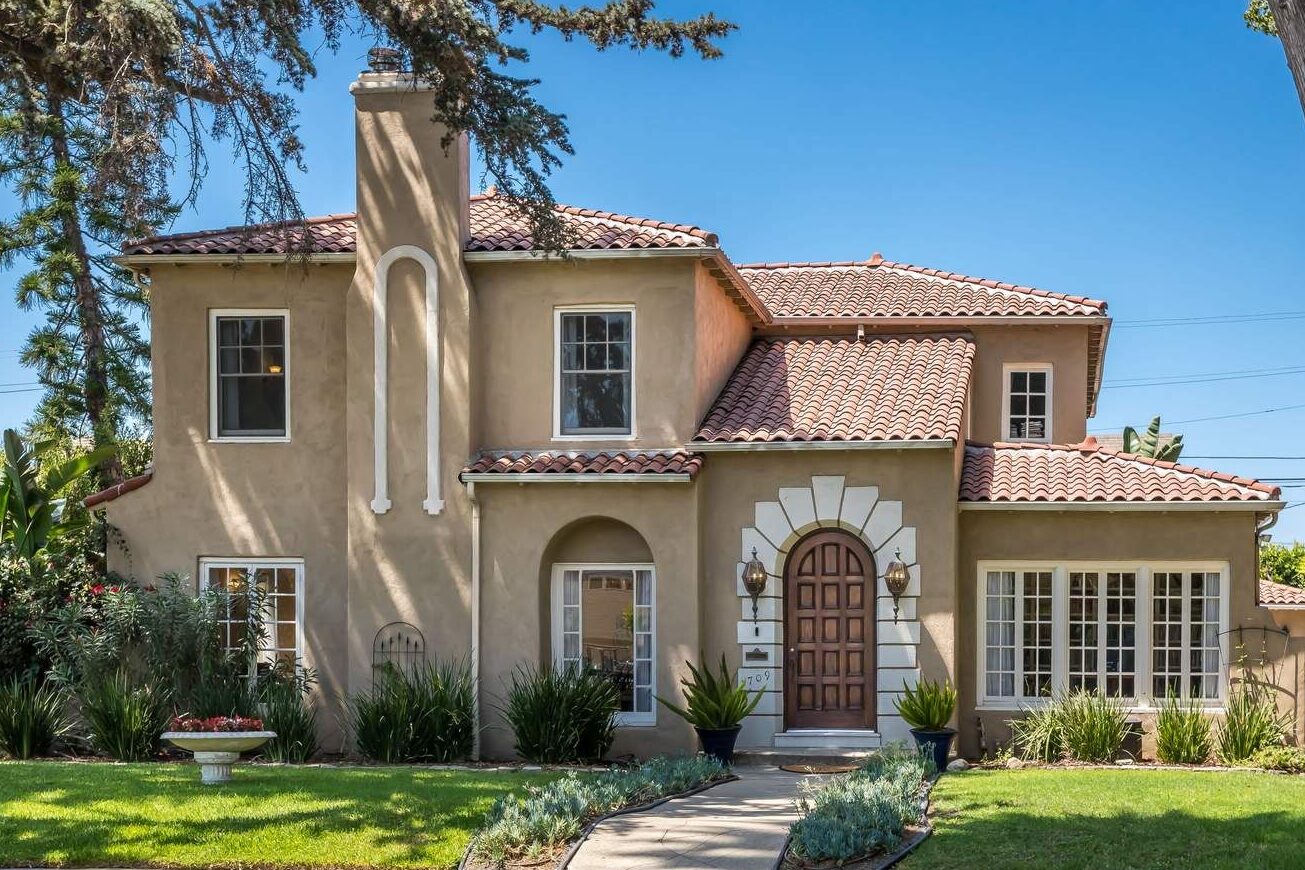

Although the higher mortgage payments made me feel handcuffed to my job, our property value continued to increase as the housing market boom continued. Before long, that original down payment in 2010 had grown into about a million dollars of real estate equity.
Read more: Physicians are trapped by golden handcuffs
From stock investor to real estate investor
In 2018, I started this blog and became an intentional investor. I focused my investing behind a strategy that would allow us to reach financial independence within 15 years. After a year of focusing strictly on the stock market, I refocused my strategy on real estate investing.
Why? Because after hundreds of hours of education in personal finance and investing, I realized that real estate is a more efficient path to financial freedom.
These posts summarize this realization:
- Why I’m investing in real estate over stocks – Part 1
- Tax benefits | Why I’m investing in real estate over stocks – Part 2
- Leverage | Why I’m investing in real estate over stocks – Part 3
Real estate is expensive
To kick off my real estate investment, I cashed out $100,000 of stocks and bought a single family home in Birmingham.
However, real estate is an expensive asset class. After the purchase of my first few rental properties, I had depleted our original cash reserves. But the first few deals went well enough that I felt that I had “proof of concept”. I presented the evidence to my wife, aligned our financial goals, and confirmed the decision to continue to purchase investment properties.
Read more: How to get your spouse to support real estate investing
When we looked at our investment portfolio for more cash, we saw two options. We could sell assets and invest the proceeds into more real estate, or we could use debt.
We carefully considered the tax implications of selling stocks and also other options like personal loans. However, we had enough equity in our home that we decided that the best way forward was to start investing with a HELOC (home equity line of credit).
This allowed us to rapidly accelerate our real estate investment, and the rest is history.
Read more:
- $325k Annual Gross Income | Anno Darwinii 3.25
- Our Short Term Rental Gamble Pays Off | Anno Darwinii 3.5
But that was then, this is now.
Is investing with a HELOC still a good idea? Was it ever a good idea? How has this decision left us financially? Let’s analyze!
What is a HELOC?
A HELOC is a “home equity line of credit.” It’s a flexible credit line issued by a bank that is typically backed by the equity in your primary home. This type of loan uses variable interest rates based on the rates set by the Federal Reserve, rather than a fixed rate like you’ll see on most mortgages.
Since the loan is secured by your home’s equity, the interest rate is usually only 1-2% higher than the target overnight lending rate. This is a much lower rate than the high-interest debt you’ll see from credit cards and other unsecured loans.
Read more: Why is the Federal Reserve Raising Interest Rates?
Additionally, HELOCs are popular because of a few key characteristics:
- Interest only payments
- Lower interest rates than a second mortgage
- A long draw period (10 years is typical)
- A revolving line of credit
The interest-only payments are a key feature. In a traditional mortgage, you pay interest and principal to the bank every month. With a HELOC, the payments are typically interest only, which makes HELOC payments comparatively cheaper.
For example, consider the payments on a loan of $300,000 at 5% interest in two scenarios:
- 30 year fixed mortgage (principal + interest): $1610/month
- Interest only HELOC (draw period): $1250/month
And since it’s “revolving,” you can use the HELOC funds over and over again. If you borrow from your HELOC, you can pay it back then borrow from it again as many times as you’d like until the end of the agreement. After the draw period, it usually converts to something similar to a mortgage loan during the repayment period.
(The details of every HELOC loan are slightly different and depend on your specific agreement with your financial institution.)
How can you use a HELOC?
A home equity loan is a often used for large expenses or purchases. The typical uses are:
- Home improvements
- Tuition payments
- Starting a business
- Consolidation of higher interest debt
Since traditional mortgages usually require you to slowly build up equity in your home, eventually many people end up with a lot of their net worth locked up in their house. A HELOC allows them to tap that equity and put that money to use.
Home improvements can be very costly, so many people can’t gather together enough money for renovations without using their home equity. Credit card debt often has interest rates of 20-30% per annum, so a HELOC is an attractive way of trading high interest rate debt for lower interest rate debt.
HELOCs are tax advantaged
An interesting feature of home equity lines of credit is its tax-advantaged nature. If you use the HELOC to “buy, build, or substantially improve” your primary home, the interest payments are tax deductible up to a certain point. There are certain rules that you need to keep in mind, but this makes a HELOC perhaps the best option for using debt to renovate your home.
If you have used a HELOC to renovate your home, make sure to talk to your CPA to make sure you file for the appropriate tax deduction.
In my mind, a HELOC has an additional tax advantage because you don’t need to sell an asset to gain access to the asset’s value. A HELOC is the real estate equivalent to a SBLOC (security backed line of credit). This is a way that many wealthy people can tap the value of their stocks without actually selling them (and creating a taxable event).
Read more: Security Backed Line of Credit (SBLOC): Never Sell Stocks Again
Can you use a HELOC to invest?
For those who are interested in investing, there are usually very few limits on what you’re allowed to do with your HELOC. Some HELOCs will specifically forbid using the funds to invest in the stock market, but others may not have that limitation.
As debt goes, a HELOC is one of the more attractive loan options for investing in real estate. It’s flexibility and interest-only payment structure makes it a great way to rapidly deploy a large amount of money to cover unexpected expenses or planned investments onto new property.
And since many people have a lot of equity locked into their primary homes, a HELOC might represent the single largest line of credit open to you.
Read more: Why the Rich Get Richer [Again]
Over the years, we’ve used our HELOC to fund everything from all-cash purchases of investment properties to renovations on our existing properties. While we’ve paid back some of it by refinancing some property with the BRRRR method, we’ve also simply been able to refinance most of it back into our primary home with a new fixed rate mortgage.
While things have worked out okay (so far), it’s important to realize that there are real risks to investing with a HELOC.
The risks of investing with a HELOC
Before you immediately take out a HELOC on your home and starting throwing it into your chosen investment, let’s go over some big risks:
- Investments can fail
- Variable interest rates can rise
- Your home is your collateral
- A real estate loan “margin call”
Investments can fail
If you’re using a HELOC, there is a predictable payment associated with that debt (at least in the short term).
But if you’re using a HELOC to invest, the value of your investments might fall. So if you buy $10,000 of stocks, you can be faced with a situation where the market turns and the value of your stocks is less than the $10,000 of debt that you owe on your HELOC. This leaves you in the uncomfortable position of either selling the stocks and cutting your losses, or continuing to hold the stocks (and the debt) until the market turns around.
If you start a business with debt from a HELOC and your business fails, you’re on the hook still for the monthly interest payments. This might be hard if you have no income because you risked it all on your new business.
For starting a new business, you might want to consider a SBA (Small Business Administration) loan, which is perhaps a better choice for this purpose.
If you’re investing into real estate with a HELOC, things are even riskier. Real estate investors know that property has a lot of associated carrying costs. Real estate taxes, insurance, landscaping, maintenance, and repairs are only some of these carrying costs.
Read more: Water is a Real Estate Investor’s Worst Enemy | Building the Empire
If you encounter a prolonged vacancy, your renovation takes longer than expected, or your income projections aren’t meeting reality, you might end up overwhelmed by servicing both the HELOC debt and the property carrying costs.
Variable interest rates can rise
As opposed to the fixed interest rate you usually see on a traditional property mortgage, a HELOC usually has a variable interest rate. If the Federal Reserve raises interest rates, any debt in a HELOC will become more expensive.
This hasn’t really been an issue for the last decade or so, but in 2022, the Federal Reserve started a campaign to fight inflation in the United States. Over the course of the year, historically low interest rates on both short and long term loans have shot up from less than 3% to 7-9%.
This is making any variable rate debt much more expensive now. This kind of risk is often called “interest rate risk” and is frustrating because it is out of your control and can change seemingly overnight.
Read more: How the Federal Reserve Might Crash the Real Estate Market
Your home is your collateral
This last point may seem obvious, but it’s so important that I want to highlight it. A HELOC is backed by the equity in your home. Therefore, if you don’t make your payments, the bank will take your home. Although most HELOC lenders will surely try to work with you to avoid a foreclosure, the fact is that this remain a risk.
So if you use HELOC debt and your investments fail or your monthly payments become too high for you to handle, you might be not only bankrupt — you might be on the street.
This danger is so large that if you’re considering investing with a HELOC, I recommend you follow this rule:
Do not use more HELOC debt than you have in liquid assets.
The Darwinian Doctor HELOC rule
By liquid assets, I mean things that you can access or sell quickly to pay off the HELOC if required. Here are some examples:
- Cash
- Money market accounts
- Stocks in pre-tax or post-tax accounts
- Physical assets that can be sold easily
(Yes, you will pay taxes and likely penalties to sell stocks that are in pre-tax accounts.)
This may limit the amount of HELOC debt that you’re able to access, but that’s the point.
Some of you might be thinking, “Rules are meant to be broken.” That’s fine, but if you borrow beyond this limit, just know that you’re playing with fire.
A real estate “margin call”
I added in this section to highlight an important risk related to the bank’s involvement in your investing. Reliability is an important factor when it comes to investing funds. If you borrow money from a friend, for example, it can be very inconvenient if your friend suddenly requests you pay all the money back within the next 7 days.
But this is exactly what is possible when you borrow money from a bank.
2008 was a rough time for real estate investors, because as the value of real estate fell, many banks chose to “call the note due.” Most loans have a maximum ” saw that their “debt to value ratio” that is desirable from the bank’s risk tolerance. Most HELOCs are crafted with a set debt to value percentage. For example, 70-90%. If you fully own a $1 million dollar property and obtain a HELOC with an 80% debt to value ratio, the bank will agree to extend you up to $800,000 in credit.
But if there is a severe real estate crash and all of a sudden that property is worth only $500,000, that same bank will not be comfortable with lending the same amount. In this situation, they can either reduce the size of the credit line, or they can cancel it altogether.
If this happens at a time when you’ve fully drawn down the credit line, you can be in a disastrous situation where you may have to come up with a lot of money almost overnight.
This phenomenon is known in the stock market world as a “margin call,” and it can be devastating.
Virtually no one believes that we will see another housing market crash like 2008 in the near future, but a real estate “margin call” is a risk of which you should be aware.
My personal experience using HELOC debt
Over the last 4 years, my wife and poured money into real estate investments. We funneled the majority of our extra cash from our well compensated day jobs into our portfolio. Between our investments into stocks and real estate, we usually invested between 20-30% of our income during this time period.
We were united in our effort to reach financial independence to support our Why (family, friends, and freedom).
But when we ran out of hard cash, we decided to continue investing with HELOC debt. This gave us the ability to do things like finish the renovations on our vacation property in Palm Springs and to fund the purchase of our new primary home in Memphis, TN.
Read more:
Currently, we have about $500,000 of HELOC debt outstanding between a HELOC on our former primary home in Los Angeles and an investment property HELOC in Palm Springs. While we originally planned to pay off all this debt by selling our Los Angeles home, the housing market cooled quickly right as we were putting our home on the market.
Therefore, we are weren’t able to cash out the equity from our Los Angeles home. Instead, we turned it into a long term rental.
Read more: 15 Things to do When Your House Doesn’t Sell
Our HELOC debt is getting more expensive
While we’ve enjoyed a very low introductory rate on the HELOC debt of around 1-3%, this introductory period is running out shortly. As soon as that happens, the low interest rate will shoot up to around 8%. This will increase the monthly payments on this debt from about $700 to about $3000 a month.
Given the costs associated with moving across the country and renovating our home, as well as the temporary interruption in my doctor income, this looming increase is causing us some mental distress. Luckily, our real estate portfolio has matured to a point where we are done with almost all of the major planned renovations. Therefore, as our rental income increases, we should finally see a strong swing towards positive cash flow in 2023.
It’s also important for me to state that we have abided by our HELOC rule. If push came to shove, we have enough liquid assets (mainly in the form of stocks) that we could sell to pay off our HELOC debt in one lump sum. This would have some pretty disastrous implications for our tax return, though, so I’d prefer to never have to do this.
Finally, I should mention I have the ability to earn a great income by practicing urology, so this stress will go away within a month or two as I get back to that as well.
Do you want to stay in one of our luxury vacation rentals in Broken Bow , OK or Palm Springs, CA? I’m a great host (according to all the 5 star reviews). Go to our private booking site below to save 14 percent off the price of Airbnb!
Conclusion
A home equity line of credit (HELOC) is one of the most flexible ways for you to leverage the value of your home to invest. HELOCs allow you quick access to a revolving line of credit that is backed by your home and has the advantage of interest only payments. It’s a convenient way to pay for big ticket items like home renovations or even real estate investments. But using a HELOC means that you are putting more risks on your most precious possession — your primary home.
Up until 2022, HELOC debt was some of the cheapest, lowest interest debt out there because it was backed by equity in your home. Now that the Federal Reserve is raising interest rates to fight inflation, it’s not so cheap anymore. We are also entering into a very uncertain economic climate, which will make it more challenging for investments and businesses to succeed.
So if you’re thinking of investing with a HELOC, consider following my rule: Do not use more HELOC debt than you have in liquid assets.
This might limit how much credit you can deploy from your HELOC, but that’s the point. If you exceed this, just do it very carefully with the knowledge that investments can fail.
I hope this post gives you a good sense of the risks and benefits of investing with a HELOC.
Good luck!
— The Darwinian Doctor
Let me know in the comments below if you have questions and please subscribe to the newsletter for more posts like this!
Want to support the blog?
- Join our investor club at Cereus Real Estate
- Visit my Recommendations page
- Check out my wife’s food blog: Eat Dessert First
- Stay at our luxury short term rentals
- Check out my TikTok channel
- Follow me on Instagram
- Follow me on YouTube
- Contact me with questions
Perhaps you’re more of a Facebook type?
Are you a physician, spouse, or professional and you’re interested in using Real Estate to gain financial freedom? Join us in our Facebook group and accelerate your journey!
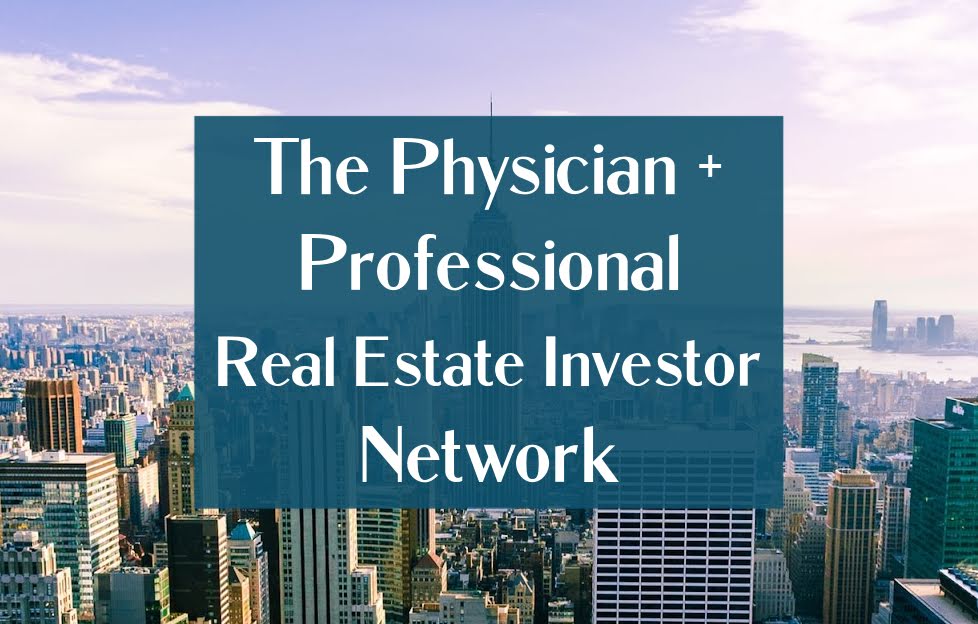

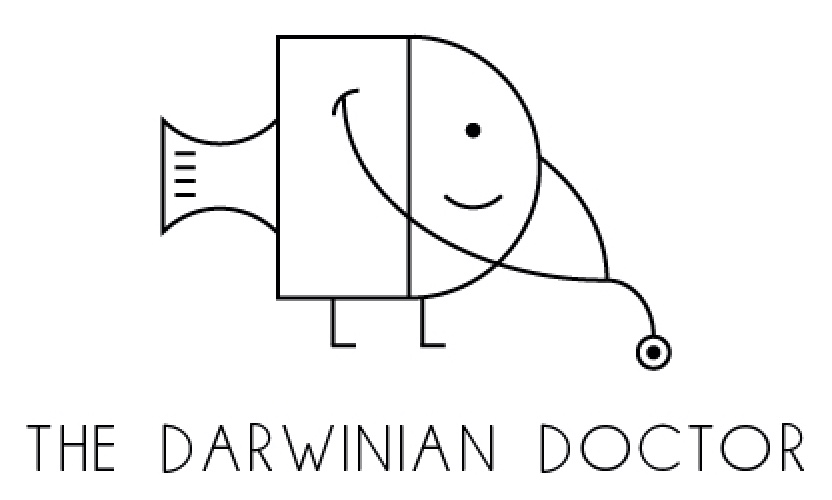
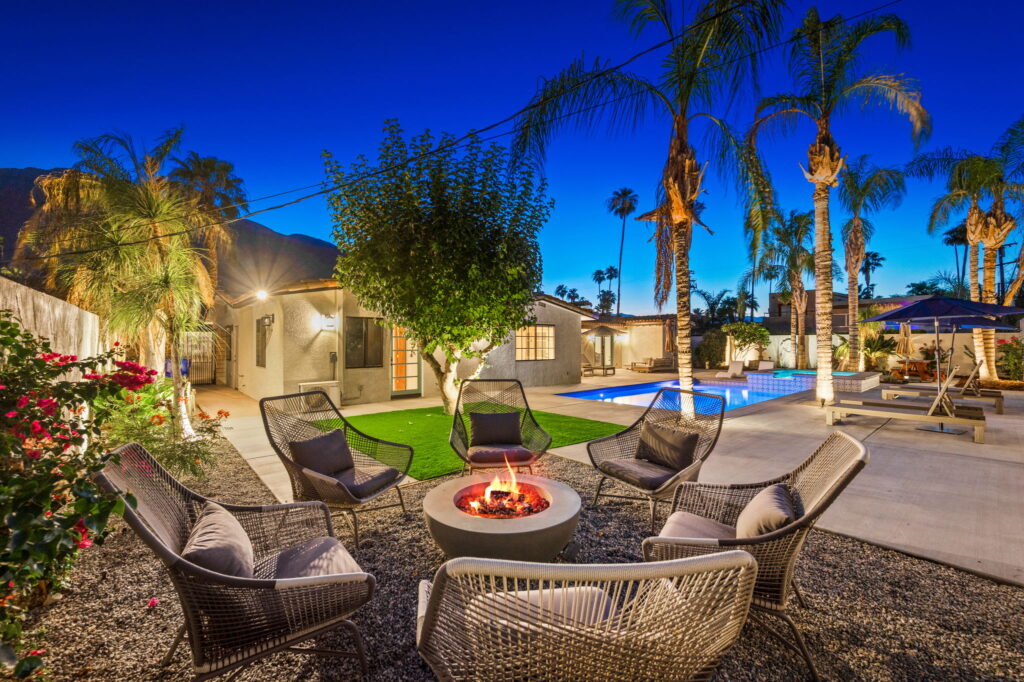

4 comments
Hi Doc, great article. Can you expand on this idea:
“While we’ve paid back some of it by refinancing some property with the BRRRR method, we’ve also simply been able to refinance most of it back into our primary home with a new fixed rate mortgage.”
So let’s say you did a BRRRR and left $75k left in the deal. After a couple of years of paying interest only payments, are you saying an option is to refinance your primary home again to take out enough cash to pay off that $75k loan?
Of course the rates have to make sense to move forward with a cash out refi.
Hi Eddie, you’ve got it. When I used HELOC money to do the BRRRR, I had HELOC debt associated with my primary home on top of an existing primary mortgage. To reduce the risk from the variable interest rate, I refinanced my home around Christmas 2021. My new lender paid off both the primary mortgage and the HELOC lender to issue one new primary mortgage.
What lender gave you HELOC on your STR in Palmsprings and what were the rate and terms?
California Bank and Trust. The rate was prime plus I think 2%, but the first six months had a intro rate of around 3%. Looking at their website now, I don’t see the intro rate anymore, and that variable rate translates to around 8%.